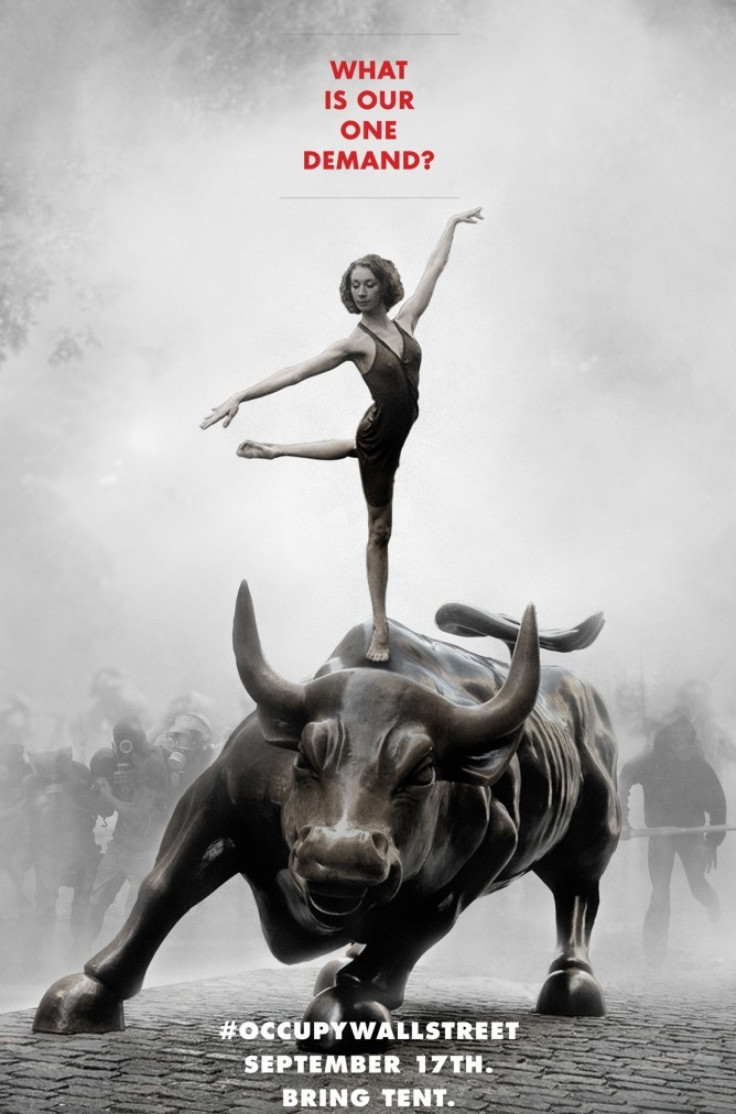In Slight To Occupy Wall Street, New Yorkers Say Cage Around Iconic Wall Street Statue No Longer Needed

Manhattan community leaders began pressing Sunday for the cage around the iconic Charging Bull statue in the middle of New York's financial district to be removed.
The cage, an interlinked metal barricade set up by police last September to protect the seven-ton bronze sculpture, was erected out of fears Occupy Wall Street activists would see the statue as an easy target for vandalism. But it has become a safety hazard, community leaders say. And given the collapse of protest activity in downtown Manhattan, it's no longer necessary.
The NYPD [has] caged the bull continuously, creating a dangerous and unsightly mess and preventing the free flow of pedestrians on the plaza on which the 'Charging Bull' stands, Arthur Piccolo, chairman of the local Bowling Green Association, told the New York Post.
A walk by the structure seems to prove his point. While the bull is a favorite spot for tourists to stand and take a snapshot, the current barricade forces most people posing for a memento to stand at the very edge of the triangular plaza where the bull is set, dangerously close to oncoming traffic on Broadway. Group pictures are nearly impossible without having swarms of people invade the vehicular lane, a daily occurrence in spite of the fact an NYPD cruiser is parked across the street at all times.
A classic New York scene is being destroyed, Ibrahim Kurtulus, vice chairman of the Bowling Green Association, also told the Post. It's creating congestion. They're flowing into the streets on the left and right side of the bull. It's a major chaotic situation. It's ludicrous.
The fact the issue is being discussed at all goes a long way to show just how sleepy the Occupy Wall Street movement has become.
Last September and October, the NYPD reacted to the influx of tens of thousands of protesters into the financial district by setting up barricades in front of sites like the New York Stock Exchange, the New York Federal Reserve and the headquarters of banks such as JPMorgan Chase and Co. (NYSE: JPM) and Bank of New York Mellon (NYSE: BK), among others. Nearly all those partitions were gone by early 2012, as the participants in street protests -- following a late November eviction from a plaza they had set as a nerve center for the movement -- waned into the dozens.
By the time the protesters came back to the Wall Street area in early March, an activist recently recounted, The pens were gone, and we were able to go out right in front of the New York Stock Exchange.
It was like we were no longer a challenge to them. That was hurtful.
The removal of the cage around the Charging Bull, if it occurs, will only deepen that perception.
A New York City Department of Transportation spokesman told the Associated Press it had heard community complaints and would work to create additional pedestrian space around Bowling Green.
© Copyright IBTimes 2024. All rights reserved.











